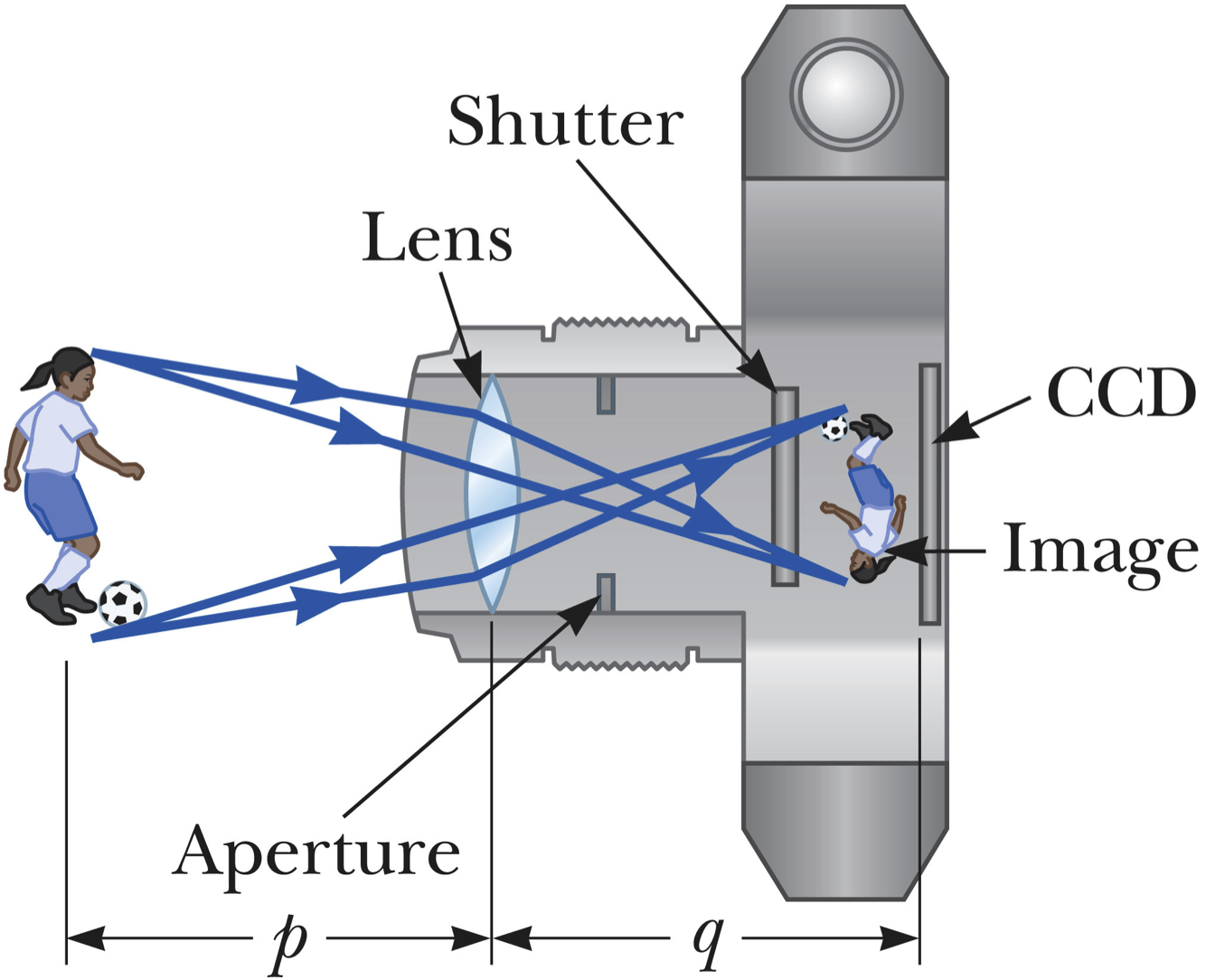
Physics 123, Fall 2012
Reading assignment: 36.5-36.7

This is either a very large camera or a very small soccer player. :-) A digital camera can be modeled as a simple converging lens that focuses an image on the sensor (a CCD, in this case), acting as the screen. If the camera is initially focused on a distant object, to focus on a close object , must the lens be moved away from the CCD or moved toward the CCD? Explain.
Away. Initially the distance from lens to CCD (q) will be very close to the focal length, f (because p is close to infinity). If the object is brought closer, q will be larger than f. (Check via a quick ray diagram and/or via the thin lens eqn.) That means the CCD will have to be farther from the lens in order to pick up the image.
Suppose you are comparing two cameras which both use the same size sensor and the same zoom level. One of them gives the aperture specification as "f/2.8" whereas the other one is "f/2.2". Which one allows more light to reach the sensor? (Or do they allow the same?)
f/2.2 will allow more light in because of a larger angle of the "light cone". It's therefore considered to be a "faster" lens than f/2.8, because to get the same exposure the shutter speed can be higher (less time of exposure).